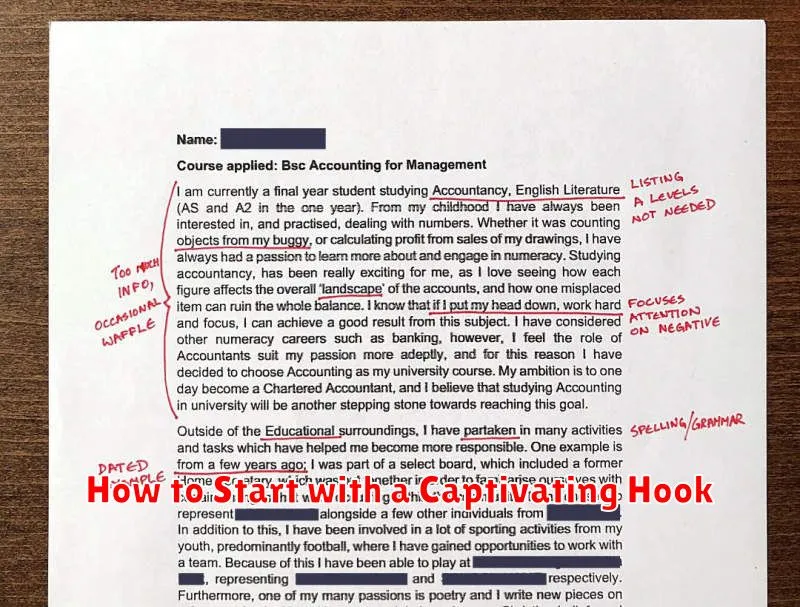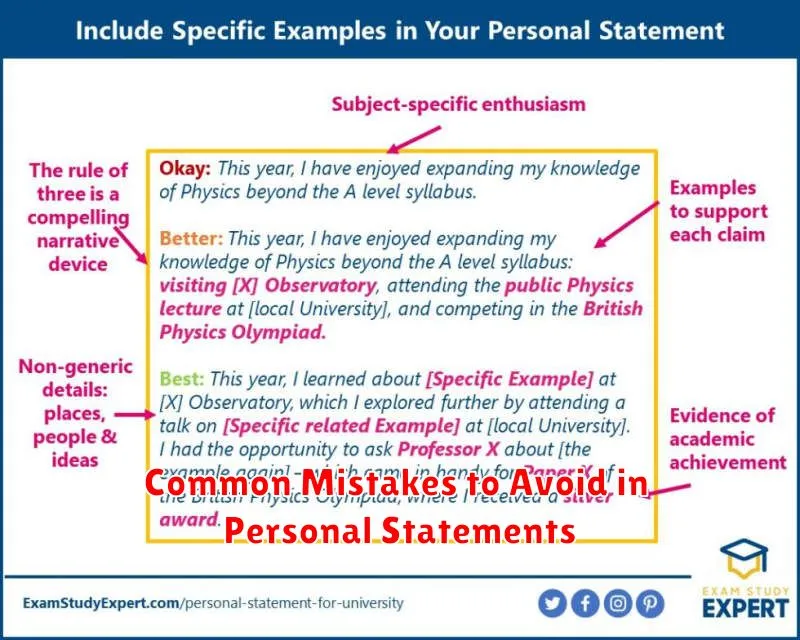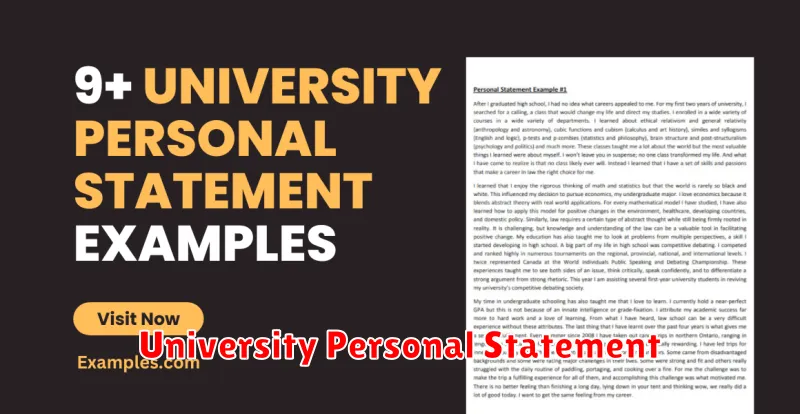Crafting a compelling personal statement is a crucial step in the university application process, as it provides a unique opportunity to showcase your individual strengths, aspirations, and suitability for your chosen course and institution. In this comprehensive guide, we will explore valuable tips and strategies on how to write a personal statement that not only captures the attention of the admissions committee but also effectively communicates your passion and readiness for academic success. Whether you are applying to an undergraduate or graduate program, producing a well-structured, genuine, and insightful personal statement can significantly enhance your chance of securing a place at your desired university. Join us as we delve into the essential elements of creating a personal statement that truly reflects your unique journey and potential.
What Is a Personal Statement and Why It Matters
A personal statement is a brief, yet powerful piece of writing that applicants submit as part of their university application. It allows candidates to present themselves, their goals, and their motivations to the admissions committee. Beyond academic qualifications, it provides insight into who you are as an individual.
The reason a personal statement matters lies in its ability to distinguish you from other applicants. In a competitive admissions process, it serves as your opportunity to stand out and showcase your unique perspective and experiences. Admissions committees look for applicants who not only excel academically but also bring diversity and vibrancy to their campus community.
Ultimately, a well-crafted personal statement can significantly influence your chances of acceptance by illustrating your passions, your readiness for academic challenges, and how you plan to contribute to the university environment. It’s an essential piece of the application puzzle that requires thoughtful reflection and a clear narrative style.
Structure and Format for a Strong Personal Statement
Crafting a strong personal statement begins with a clear structure. Typically, a personal statement is divided into three main sections: the introduction, the body, and the conclusion. Each section should serve a specific purpose and transition smoothly into the next.
The introduction is your opportunity to make a positive first impression. Start with a hook that captures the attention of the admissions committee. This could be an anecdote, a personal achievement, or a bold statement about your academic goals. Clearly state your purpose and the field of study you wish to pursue.
The body of the personal statement should delve into your academic and extracurricular experiences. Present them in a way that highlights your strengths and passion for the chosen course. Relate your experiences to the skills and qualities required by the program, providing specific examples that demonstrate your suitability.
Finally, the conclusion should succinctly reiterate your interest in the program and your commitment to your educational and career goals. Leave the admissions officers with a lasting impression by highlighting your readiness and enthusiasm for the challenges ahead.
The format of your personal statement is equally important. Use clear and concise language, and proofread your work for grammatical accuracy and coherence. A well-structured and formatted personal statement reflects your attention to detail and professionalism, crucial qualities in academic settings.
How to Start with a Captivating Hook

Creating a captivating hook is essential when writing a personal statement for university applications. This initial statement sets the tone and grabs the admission officer’s attention from the outset. Start with an engaging anecdote that reflects your passion or motivation for the field you are pursuing. By sharing a personal story or a defining moment, you can provide insight into who you are beyond your academic accomplishments.
Another effective approach is to include a thought-provoking question or a bold statement relevant to your aspirations. This technique intrigues the reader and encourages them to continue reading to understand your perspective. For example, posing a question about the future possibilities in your field can underscore your enthusiasm and forward-thinking nature.
Ensure your hook is genuine and true to your experiences. Admission officers can identify when statements feel forced or exaggerated. Therefore, maintaining an authentic voice is crucial to establishing a strong connection with the reader and drawing them into your narrative effectively.
Highlight Your Academic and Career Aspirations
When crafting a personal statement for university applications, it’s crucial to clearly demonstrate your academic and career aspirations. Admissions officers want to understand not only your passion for the subject but also your long-term goals and how you plan to achieve them.
Start by articulating your educational objectives. Clearly outline what you aim to learn and achieve academically during your university experience. Be specific about the fields or specializations that interest you, and mention any relevant skills or knowledge you hope to acquire.
Next, connect these academic goals to your career aspirations. Explain how a degree from their university will help you attain your professional objectives. Whether you aim to innovate in a particular industry, contribute to significant research, or advance in a specific career path, ensure your goals align logically with the program you’re applying for.
Incorporate your past experiences, such as internships, volunteer work, or relevant projects, that have shaped your ambitions. This not only highlights your background but also shows a commitment to your chosen field.
Conclusively, keep your narrative coherent and compelling. A clear vision of your academic and career aspirations can significantly enhance your personal statement, making it stand out to admissions committees.
Show Your Passion and Suitability for the Program
When writing a personal statement for university applications, it’s crucial to express your genuine enthusiasm and align your experiences with the program’s ethos. Begin by explaining why you are drawn to the program. Highlight specific aspects of the curriculum or faculty that resonate with your academic interests and career aspirations.
Next, demonstrate your suitability by illustrating how your prior academic and extracurricular experiences have prepared you for success. Use concrete examples to show how your skills and achievements make you an ideal candidate. Whether it’s through coursework, internships, or personal projects, ensure these examples convey your dedication and readiness to contribute uniquely to the program.
Remember, a well-crafted personal statement should convey your passion while succinctly presenting your qualifications, making you a compelling applicant. This will help admissions committees see not just your potential, but also your fit with their program.
Avoid Clichés and Generic Statements
When writing a personal statement for university applications, it’s crucial to stand out from the crowd by avoiding clichés and generic statements. These overused phrases can make your application appear uninspired and unoriginal, diminishing your individual voice.
Universities receive thousands of applications, and admissions officers are well-acquainted with phrases like “I’ve always wanted to be a…” or “I am a hard worker.” Such statements fail to convey what is uniquely special about you. Instead, focus on specific anecdotes or experiences that illustrate your personal journey and character.
By offering concrete examples and personal reflections, you create a more engaging and authentic narrative. This approach not only highlights your genuine interest and commitment but also allows your application to reflect your unique perspective and individuality.
Proofread and Revise for Impact
After drafting your personal statement, it’s crucial to proofread and revise to maximize its impact. Carefully check for any spelling and grammatical errors, as these can undermine your credibility.
Focus on clarity by ensuring each paragraph clearly supports your application goals. Use clear, concise language without unnecessary jargon.
Solicit feedback from trusted peers or mentors to gain new perspectives. An outside opinion can highlight areas that need improvement or further clarification.
Finally, revise your statement multiple times. Each pass should enhance the narrative and ensure your message aligns with the university’s values and expectations. This diligence will significantly enhance the impact of your personal statement.
Common Mistakes to Avoid in Personal Statements

Writing a personal statement for university applications is a crucial task that requires careful attention. Avoiding common mistakes can significantly enhance your chances of making a positive impression.
One common mistake is failing to thoroughly research the university and the specific program to which you’re applying. Ensure you understand what the institution values and seek to align your statement with these priorities.
Avoid being too generic. Admissions officers read thousands of applications and easily recognize when statements lack originality. Use specific examples and personal anecdotes to make your statement stand out.
Many applicants fall into the trap of focusing too much on their past achievements without connecting them to future aspirations. It’s crucial to clearly articulate how your past experiences align with your future goals and how the program will help you achieve them.
Another common error is neglecting to provide a clear structure. Your statement should have a coherent flow, with a strong introduction, informative body paragraphs, and a compelling conclusion that ties everything together.
Finally, pay close attention to grammar and spelling. Errors in these areas can distract from your message and give a negative impression. Always proofread your statement or have someone else review it to ensure clarity and accuracy.

